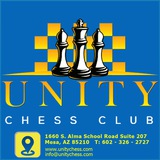Following in the footsteps of Lilienthal! The king moves towards a safer place, aiming to connect the rooks before the action starts on the queenside.
18.g4 Bd7 19.Rhg1 b4 20.axb4 axb4 21.Rgb1 Kd8 22.cxb4 Rxb4 23.Qc3 Rxb1 24.Rxb1 Kc7
Here it is very probable that the battle will be fought on the kingside. Therefore Kamsky takes appropriate measures.
Thus Black has completed his artificial castling. In the meantime White is trying to create play on the queenside.
This allows Black to keep the queenside closed whichever pawn, a or b, White advances. This very much resembles the outcome of Petrosian's 1 8 . . . a6 ! in his 7th match game against Spassky in 1966. Now Black still has a long way to go on the kingside, but at least his king, unlike the white one, is out of the way, and he later managed to outwit his opponent.
Heading for an endgame can also be a valid reason for taking your king for a stroll. In the diagram position, the queens are very likely to disappear from the board, and because of that, Black would prefer to keep his king in the center, for instance on e7. Apparently, Anand was not satisfied with that and sent his king towards c7, where it also defends the pawn on b7.
It's not much of a pawn that White wins, considering his doubled c-pawns. Although he disposes of his bad bishop, it is Black who obtains the active pieces.
24...Kc6 25.Bxc6 Bxc6 26.Qxc5 dxc5 27.Rb2 Ra3 28.Nb1 Ra4 29.Nd2 Rd8 30.Re1 Rd6 31.g4 Be8
